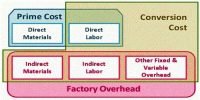Contract costing is a way of providing a quotation for especially large and long term projects that will usually be performed over a number of accounting periods. It is the tracking of costs associated with a specific contract with a customer. For example, large civil engineering projects will often involve a business using contract costing when estimating the cost of participating in the project.
It is otherwise called as terminal costing. It is one of the methods of Job Costing.
Following are the distinctive features of contract costing:
- A separate contract account is maintained for each contract.
- Each contract is considered as a cost unit.
- Contracts are undertaken to special requirements of the customers.
- Duration of contracts is relatively for a long period.
- A major portion of contract work is done at the contract site.
- Expenses incurred at the contract site are considered tote direct expenses.
- Plant and equipment may be purchased for the contract or may be hired for the duration of the contract.
- Establishment expenses like head office, central -store department are treated as overhead expenses. These overheads are recovered either based on the material consumption ratio, labor cost ratio, labor hour ratio or the value of material or labor consumption ratio.
- A number of contract works with a contractor may not be very large.
- A separate account is maintained and prepared for each contract to find out the profit earned from each contract separately.
Contract Costing is mostly useful in civil production and manufacturing projects, shipbuilding, road, and railway line contracts, construction of bridges etc.















